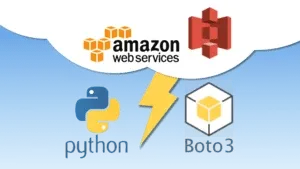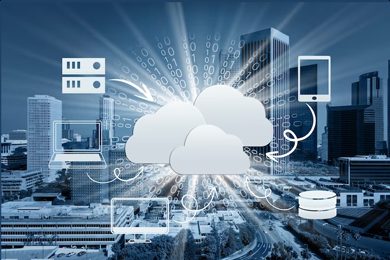This plan includes
- Limited free courses access
- Play & Pause Course Videos
- Video Recorded Lectures
- Learn on Mobile/PC/Tablet
- Quizzes and Real Projects
- Lifetime Course Certificate
- Email & Chat Support
What you'll learn?
- This course covers all the basics of AWS, from understanding the cloud and setting up a FREE AWS account to learning how to run an instance.
- This is also a *2-for-1* course! You'll gain access to both the AWS Essentials and AWS Solutions Architect - Associate certification prep course.
- Learn about the AWS Management Console, S3 buckets, EC2 instances, database services, security in the cloud, and the costs associated with AWS.
Course Overview
Mike Meyers and the Total Seminars Team, brings you this AWS Essentials & Solutions Architect course with your instructor, Tom Carpenter.
Are you looking to learn more about AWS and what it can do for you or your company? Maybe you've heard this buzzword, but don't know what it means to take your business and network solutions into the AWS cloud. Or, perhaps you're a seasoned network tech looking to become an AWS Certified Solutions Architect Associate.
Did you know the average annual salary for AWS Solutions Architect certification holders is $167,366 per year*? There aren't enough AWS-trained people in the job market, so the demand for AWS Solutions Architect trained employees is high right now. Start your next career today with my course.
Tom Carpenter is the Chief Technical Officer at CWNP (Certified Wireless Network Professionals). He's been in the IT industry for 25+ years, written over 20 books on IT subjects, and is also heavily involved in objectives development and exam creation in the certification industry. Tom uses AWS daily to run several businesses websites and operate test labs used for content creation and management, among other things. Tom's teaching style is casual; he wants you to have fun while you learn practical applications of AWS. Join our class now and let us know how you plan to use AWS in your personal or professional life!
WHERE SHOULD I BEGIN?
BEGINNERS
-
Start with Part 1 - AWS Essentials
-
If you're totally new to AWS and looking for a crash course in the foundations, I would recommend starting at the beginning of this course with Essentials Chapter 1 - AWS Foundations and Services and watching the first 12 episodes.
-
Once you've got the basics down, keep on the learning path and start the AWS Solutions Architect - Associate video course, which begins at Chapter 1 - AWS Cloud Services Overview.
EXPERTS
-
Start with Part 2 - AWS Solutions Architect - Associate
-
Maybe you're a seasoned network tech, or if you're already familiar with the AWS foundations, you might jump straight into the AWS Solutions Architect - Associate videos, which begin at Chapter 1 - AWS Cloud Services Overview.
-
If you need a refresher at any time, feel free to go back to the beginning of the course and take a look at the AWS Essentials videos, which begin with Essentials Chapter 1 - AWS Foundations and Services.
Not sure which AWS course to choose on Udemy? Check out our features and benefits:
FEATURES & BENEFITS
-
3-for-1 course! This course included both: AWS Technical Essentials and AWS Certified Solutions Architect - Associate PLUS 2 free practice tests
-
Over 18 hours of content and 17 downloadable resources, including PDF notes on every chapter.
-
The AWS Technical Essentials course is offered on AWS's website, however you would pay a whopping $675 on their website!
-
AWS also offers a 3-day virtual classroom training for the AWS Certified Solutions Architect - Associate exam, however it costs $2,095!
------------------------------------
WHAT'S COVERED?
The AWS Technical Essentials course is the first 14 episodes and mirrors the class AWS offers online. The Technical Essentials course isn't a certification exam prep course, and doesn't have exam domains, however here's a list of what's covered:
-
Terminology and concepts related to the AWS platform
-
How to navigate the AWS Management Console
-
Key concepts of AWS security measures and AWS Identity and Access Management (IAM)
-
Foundational services
-
Amazon Elastic Compute Cloud (Amazon EC2), Amazon Virtual Private Cloud (Amazon VPC), Amazon Simple Storage Service (Amazon S3), and Amazon Elastic Block Store (Amazon EBS)
-
-
Database services
-
Amazon DynamoDB and Amazon Relational Database Service (Amazon RDS)
-
-
Management services
-
AWS Auto Scaling, Amazon CloudWatch, Elastic Load Balancing (ELB), and AWS Trusted Advisor**
-
The AWS Certified Solutions Architect - Associate exam domains are:
-
Domain 1: Design Resilient Architectures (34%)
-
Domain 2: Define Performant Architectures (24%)
-
Domain 3: Specify Secure Applications and Architectures (26%)
-
Domain 4: Design Cost-Optimized Architectures (10%)
-
Domain 5: Define Operationally Excellent Architectures (6%)
IS THE AWS CERTIFIED SOLUTIONS ARCHITECT - ASSOCIATE EXAM RIGHT FOR YOU?
The AWS Solutions Architect Associate certification is ideal for those working in roles such as:
-
Solutions Architect
-
Development Operations (DevOps) Engineer
-
Software Engineer
-
Site Reliability Engineer (SRE)
-
Data Engineer
-
Senior Solutions Architect**
-------------------------------------------
Pre-requisites
- There are absolutely NO requirements for this course. I'll walk you through all the basics in the AWS Essentials episodes. If you like what you learn, continue on with the AWS Solutions Architect - Associate series.
Target Audience
- This course is intended for anyone who's ever heard the word
- This course is also great for anyone looking to move their business solutions to the AWS cloud, and learn how AWS can help manage your costs, security, storage, and computational needs.
- The AWS Solutions Architect - Associate course will go into greater detail and teach you what you need to pass the AWS Solutions Architect certification exam.
Curriculum 165 Lectures 19:52:04
Section 1 : Essentials Chapter 1 - AWS Foundations and Services
- Lecture 2 :
- What's in a Name?
- Lecture 3 :
- Ready, Set, Go
- Lecture 4 :
- Exploring the Management Console
- Lecture 5 :
- Creating an S3 Bucket
- Lecture 6 :
- Creating an EC2 Instance
- Lecture 7 :
- AWS Databases
- Lecture 8 :
- Other Cool Services
- Lecture 9 :
- Introduction
- Lecture 10 :
- Essentials Chapter 1 - AWS Foundations and Services
Section 2 : Essentials Chapter 2 - AWS Security & Costs
- Lecture 1 :
- IAM...What?
- Lecture 2 :
- AWS Costs
- Lecture 3 :
- AWS Documentation
- Lecture 4 :
- AWS Certification Path
- Lecture 5 :
- Essentials Chapter 2 - AWS Security & Costs
Section 3 : Solutions Architect Chapter 1 - AWS Cloud Services Overview
- Lecture 1 :
- Cloud Computing Defined
- Lecture 2 :
- Benefits of Cloud Computing
- Lecture 3 :
- Cloud Computing Models
- Lecture 4 :
- History
- Lecture 5 :
- Platform
- Lecture 6 :
- Services, Part 1
- Lecture 7 :
- Services, Part 2
- Lecture 8 :
- Security and Compliance
- Lecture 9 :
- Regions and Availability
- Lecture 10 :
- Solutions Architect Chapter 1 - AWS Cloud Services Overview Quiz
Section 4 : Solutions Architect Chapter 2 - AWS Storage Design
- Lecture 1 :
- Storage Services
- Lecture 2 :
- S3 Storage Class
- Lecture 3 :
- S3 Terminology
- Lecture 4 :
- S3 Advanced Features
- Lecture 5 :
- Creating S3 Buckets Lab
- Lecture 6 :
- S3 Bucket Properties
- Lecture 7 :
- S3 Managing Objects Lab
- Lecture 8 :
- Glacier
- Lecture 9 :
- Setting up a Glacier Vault Lab
- Lecture 10 :
- Elastic Block Store (EBS)
- Lecture 11 :
- Creating EBS Volumes Lab
- Lecture 12 :
- Elastic File System (EFS)
- Lecture 13 :
- Creating an EFS File System Lab
- Lecture 14 :
- Integrating On-Premises Storage
- Lecture 15 :
- Storage Access Security Lab
- Lecture 16 :
- Storage Performance
- Lecture 17 :
- Solutions Architect Chapter 2 - AWS Storage Design Quiz
Section 5 : Solutions Architect Chapter 3 - Virtual Private Cloud (VPC)
- Lecture 1 :
- Virtual Private Cloud (VPC) Overview
- Lecture 2 :
- Creating a VPC Lab
- Lecture 3 :
- Configuring DHCP Options Lab
- Lecture 4 :
- Elastic IP Addresses
- Lecture 5 :
- Elastic Network Interfaces (ENIs)
- Lecture 6 :
- Endpoints
- Lecture 7 :
- VPC Peering
- Lecture 8 :
- Creating a VPC Peering Connection Lab
- Lecture 9 :
- Security Groups Overview
- Lecture 10 :
- Network Address Translation (NAT)
- Lecture 11 :
- Gateways (VPGs and CGWs)
- Lecture 12 :
- Solutions Architect Chapter 3 - Virtual Private Cloud (VPC) Quiz
Section 6 : Solutions Architect Chapter 4 - Compute Services Design
- Lecture 1 :
- EC2 Overview
- Lecture 2 :
- EC2 Instance Types
- Lecture 3 :
- EC2 Pricing
- Lecture 4 :
- EBS and EC2
- Lecture 5 :
- Solutions Architect Chapter 4 - Compute Services Design Quiz
Section 7 : Solutions Architect Chapter 5 - Compute Services Implementation
- Lecture 1 :
- Launching an EC2 Linux Instance Lab
- Lecture 2 :
- Configuring an EC2 Linux Instance Lab
- Lecture 3 :
- Setting up an EC2 Windows Instance Lab
- Lecture 4 :
- Shared Tenancy
- Lecture 5 :
- Dedicated Hosts
- Lecture 6 :
- Dedicated Instances
- Lecture 7 :
- AMI Virtualization
- Lecture 8 :
- Solutions Architect Chapter 5 - Compute Services Implementation Quiz
Section 8 : Solutions Architect Chapter 6 - Compute Services Management
- Lecture 1 :
- Instance Management
- Lecture 2 :
- Connecting to Instances Lab
- Lecture 3 :
- Working with Security Groups
- Lecture 4 :
- Working with Security Groups Lab
- Lecture 5 :
- Elastic Container Service (ECS)
- Lecture 6 :
- Elastic Beanstalk Environment
- Lecture 7 :
- Solutions Architect Chapter 6 - Compute Services Management Quiz
Section 9 : Solutions Architect Chapter 7 - Identity and Access Management (IAM)
- Lecture 1 :
- Identity and Access Management (IAM) Overview
- Lecture 2 :
- Principals
- Lecture 3 :
- Root User
- Lecture 4 :
- Authentication
- Lecture 5 :
- Authorization Policies
- Lecture 6 :
- Multi-Factor Authentication
- Lecture 7 :
- Key Rotation
- Lecture 8 :
- Multiple Permissions
- Lecture 9 :
- AWS Compliance Program
- Lecture 10 :
- Shared Responisbility Model
- Lecture 11 :
- Solutions Architect Chapter 7 - Identity and Access Management (IAM) Quiz
Section 10 : Solutions Architect Chapter 8 - IAM Best Practices
- Lecture 1 :
- User Accounts
- Lecture 2 :
- Password Policies
- Lecture 3 :
- Credential Rotation
- Lecture 4 :
- Principle of Least Privelege
- Lecture 5 :
- IAM Roles
- Lecture 6 :
- Policy Conditions
- Lecture 7 :
- CloudTrail
- Lecture 8 :
- Solutions Architect Chapter 8 - IAM Best Practices Quiz
Section 11 : Solutions Architect Chapter 9 - Auto Scaling Solutions
- Lecture 1 :
- Auto Scaling Overview
- Lecture 2 :
- Auto Scaling Groups
- Lecture 3 :
- Termination Policies
- Lecture 4 :
- Auto Scaling Configuration Lab
- Lecture 5 :
- Launch Methods
- Lecture 6 :
- Load Balancer Concepts
- Lecture 7 :
- Elastic Load Balancing (ELB)
- Lecture 8 :
- Solutions Architect Chapter 9 - Auto Scaling Solutions Quiz
Section 12 : Solutions Architect Chapter 10 - Virtual Network Services
- Lecture 1 :
- DNS
- Lecture 2 :
- Congifugring DNS Lab
- Lecture 3 :
- Configuring Route 53 Lab
- Lecture 4 :
- Configuring ACLs and NACLs Lab
- Lecture 5 :
- Flow Logs
- Lecture 6 :
- Solutions Architect Chapter 10 - Virtual Network Services Quiz
Section 13 : Solutions Architect Chapter 11 - AWS Application Deployment
- Lecture 1 :
- Application and Deployment Services
- Lecture 2 :
- Lambda
- Lecture 3 :
- API Gateway
- Lecture 4 :
- Kinesis
- Lecture 5 :
- Kinesis Data Streams and Firehose
- Lecture 6 :
- Kinesis Data Analytics
- Lecture 7 :
- Reference Architectures
- Lecture 8 :
- CloudFront
- Lecture 9 :
- Web Application Firewall (WAF)
- Lecture 10 :
- Simple Queue Service (SQS)
- Lecture 11 :
- Simple Notification Service (SNS)
- Lecture 12 :
- Simple Workflow (SWF)
- Lecture 13 :
- Step Functions
- Lecture 14 :
- OpsWorks
- Lecture 15 :
- Cognito
- Lecture 16 :
- Elastic MapReduce (EMR)
- Lecture 17 :
- CloudFormation
- Lecture 18 :
- CloudWatch
- Lecture 19 :
- Trusted Advisor
- Lecture 20 :
- Organizations
- Lecture 21 :
- Solutions Architect Chapter 11 - AWS Application Deployment Quiz
Section 14 : Solutions Architect Chapter 12 - AWS Database Design
- Lecture 1 :
- Database Types
- Lecture 2 :
- Relational Databases
- Lecture 3 :
- Database Hosting Methods
- Lecture 4 :
- High Availability Solutions
- Lecture 5 :
- Scalability Solutions
- Lecture 6 :
- Database Security
- Lecture 7 :
- Aurora
- Lecture 8 :
- Redshift
- Lecture 9 :
- DynamoDB
- Lecture 10 :
- Solutions Architect Chapter 12 - AWS Database Design Quiz
Section 15 : Solutions Architect Chapter 13 - Database Deployment
- Lecture 1 :
- DynamoDB Tables Lab
- Lecture 2 :
- MySQL Lab
- Lecture 3 :
- Configuration Lab
- Lecture 4 :
- Backups Lab
- Lecture 5 :
- Restore Lab
- Lecture 6 :
- Snapshot Lab
- Lecture 7 :
- Monitoring Lab
- Lecture 8 :
- Solutions Architect Chapter 13 - Database Deployment Quiz
Section 16 : Solutions Architect Chapter 14 - Additional AWS Services
- Lecture 1 :
- Media Content Delivery
- Lecture 2 :
- Desktop & Appstreaming
- Lecture 3 :
- ElastiCache
- Lecture 4 :
- Security Services Lab
- Lecture 5 :
- Analytics Engines
- Lecture 6 :
- Development Operations (DevOps)
- Lecture 7 :
- Solutions Architect Chapter 14 - Additional AWS Services Quiz
Section 17 : Solutions Architect Chapter 15 - Operational Excellence with AWS
- Lecture 1 :
- The Operational Excellence Process
- Lecture 2 :
- Widget Makers Scenario
- Lecture 3 :
- Resilient Design
- Lecture 4 :
- Resilient Design Scenario
- Lecture 5 :
- Performant Design
- Lecture 6 :
- Performant Design Scenario
- Lecture 7 :
- Secure Design
- Lecture 8 :
- Secure Design Scenario
- Lecture 9 :
- Cost Optimization
- Lecture 10 :
- Cost Optimization Scenario
- Lecture 11 :
- General Best Practices
- Lecture 12 :
- Solutions Architect Chapter 15 - Operational Excellence with AWS Quiz
Our learners work at
Frequently Asked Questions
How do i access the course after purchase?
It's simple. When you sign up, you'll immediately have unlimited viewing of thousands of expert courses, paths to guide your learning, tools to measure your skills and hands-on resources like exercise files. There’s no limit on what you can learn and you can cancel at any time.Are these video based online self-learning courses?
Yes. All of the courses comes with online video based lectures created by certified instructors. Instructors have crafted these courses with a blend of high quality interactive videos, lectures, quizzes & real world projects to give you an indepth knowledge about the topic.Can i play & pause the course as per my convenience?
Yes absolutely & thats one of the advantage of self-paced courses. You can anytime pause or resume the course & come back & forth from one lecture to another lecture, play the videos mulitple times & so on.How do i contact the instructor for any doubts or questions?
Most of these courses have general questions & answers already covered within the course lectures. However, if you need any further help from the instructor, you can use the inbuilt Chat with Instructor option to send a message to an instructor & they will reply you within 24 hours. You can ask as many questions as you want.Do i need a pc to access the course or can i do it on mobile & tablet as well?
Brilliant question? Isn't it? You can access the courses on any device like PC, Mobile, Tablet & even on a smart tv. For mobile & a tablet you can download the Learnfly android or an iOS app. If mobile app is not available in your country, you can access the course directly by visting our website, its fully mobile friendly.Do i get any certificate for the courses?
Yes. Once you complete any course on our platform along with provided assessments by the instructor, you will be eligble to get certificate of course completion.
For how long can i access my course on the platform?
You require an active subscription to access courses on our platform. If your subscription is active, you can access any course on our platform with no restrictions.Is there any free trial?
Currently, we do not offer any free trial.Can i cancel anytime?
Yes, you can cancel your subscription at any time. Your subscription will auto-renew until you cancel, but why would you want to?
Instructor

475174 Course Views
6 Courses



 Tech & IT
Tech & IT
 Business
Business
 Coding & Developer
Coding & Developer
 Finance & Accounting
Finance & Accounting
 Academics
Academics
 Office Applications
Office Applications
 Art & Design
Art & Design
 Marketing
Marketing
 Health & Wellness
Health & Wellness
 Sounds & Music
Sounds & Music
 Lifestyle
Lifestyle
 Photography
Photography





















